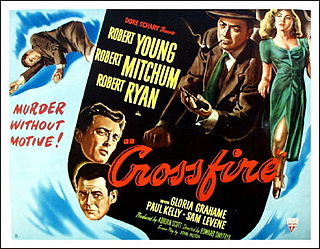
Crossfire is a 1947 American film noir drama film starring Robert Young, Robert Mitchum and Robert Ryan which deals with the theme of antisemitism, as did that year's Academy Award for Best Picture winner, Gentleman's Agreement. The film was directed by Edward Dmytryk and the screenplay was written by John Paxton, based on the 1945 novel The Brick Foxhole by screenwriter and director Richard Brooks. The film's supporting cast features Gloria Grahame and Sam Levene. The picture received five Oscar nominations, including Ryan for Best Supporting Actor and Gloria Grahame for Best Supporting Actress. It was the first B movie to receive a Best Picture nomination.

The Greatest Show on Earth is a 1952 American drama film produced and directed by Cecil B. DeMille, shot in Technicolor and released by Paramount Pictures. Set in the Ringling Bros. and Barnum & Bailey Circus, the film stars Betty Hutton and Cornel Wilde as trapeze artists competing for the center ring and Charlton Heston as the circus manager. James Stewart also stars as a mysterious clown who never removes his makeup, and Dorothy Lamour and Gloria Grahame also play supporting roles.
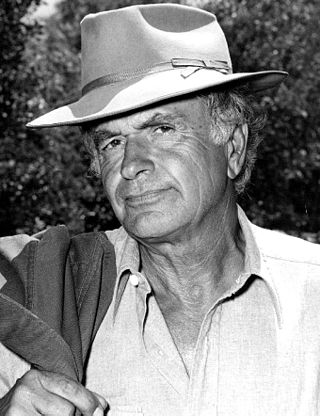
Noah Lindsey Beery was an American actor often specializing in warm, friendly character roles similar to many portrayed by his Oscar-winning uncle, Wallace Beery. Unlike his more famous uncle, however, Beery Jr. seldom broke away from playing supporting roles. Active as an actor in films or television for well over half a century, he was best known for playing James Garner's character's father, Joseph "Rocky" Rockford, in the NBC television series The Rockford Files (1974–1980). His father, Noah Beery, enjoyed a similarly lengthy film career as an extremely prominent supporting actor in major films, although the elder Beery was also frequently a leading man during the silent film era.

Parley Edward Baer was an American actor in radio and later in television and film. Despite dozens of appearances in television series and theatrical films, he remains best known as the original "Chester" in the radio version of Gunsmoke, and as the Mayor of Mayberry in The Andy Griffith Show.

He Who Gets Slapped is a 1924 American silent psychological thriller film starring Lon Chaney, Norma Shearer, and John Gilbert, and directed by Victor Sjöström. The film was written by Victor Seastrom and Carey Wilson, based on the Russian play He Who Gets Slapped by playwright Leonid Andreyev, which was completed by Andreyev in August 1915, two months before its world premiere at the Moscow Art Theatre on October 27, 1915. A critically successful Broadway production, using an English language translation of the original Russian by Gregory Zilboorg, was staged in 1922, premiering at the Garrick Theatre on January 9, 1922, with Richard Bennett (actor) playing the "HE" role on stage. The Russian original was made into a Russian movie in 1916.
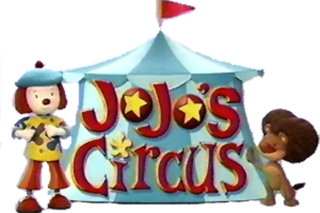
JoJo's Circus is a stop-motion animated television series created by Jim Jinkins, David Campbell, Lisa Jinkins, and Eric Weiner and produced by the Canada-based Cuppa Coffee Studios and Cartoon Pizza. The series was written by Douglas Wood, who previously worked for Tiny Toon Adventures and Animaniacs as a creative executive. The series' songs were composed by Jeffrey Zahn and Jim Latham, with lyrics done by Judy Rothman. The theme song was performed by BECKY.
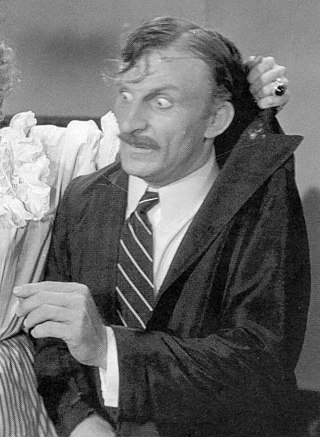
Emil Sitka was an American actor who appeared in hundreds of movies, short films, and television shows, and who is best known for his numerous appearances with The Three Stooges. He was the unofficial "last Stooge", since he was tapped to be the new middle Stooge when Larry Fine suffered a stroke in 1970. He is one of only two actors to have worked with all six Stooges on film in the various incarnations of the group.
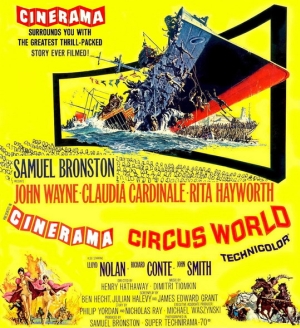
Circus World is a 1964 American Drama Western film starring John Wayne, Claudia Cardinale and Rita Hayworth. It was directed by Henry Hathaway and produced by Samuel Bronston, with a screenplay by Ben Hecht, Julian Zimet, and James Edward Grant, from a story by Bernard Gordon and Nicholas Ray.

Billy Rose's Jumbo is a 1962 American musical film released by Metro-Goldwyn-Mayer and starring Doris Day, Stephen Boyd, Jimmy Durante, and Martha Raye. An adaptation of the stage musical Jumbo produced by Billy Rose, the film was directed by Charles Walters, written by Sidney Sheldon, and featured Busby Berkeley's choreography. It was nominated for an Academy Award for the adaptation of its Rodgers and Hart score.
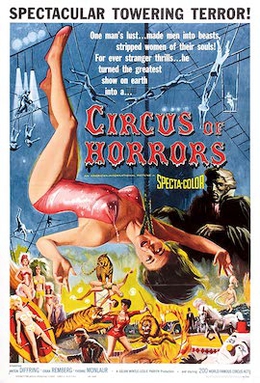
Circus of Horrors is a 1960 British horror film directed by Sidney Hayers, and starring Anton Diffring, Yvonne Monlaur, Erika Remberg, Kenneth Griffith, Jane Hylton, Conrad Phillips, Yvonne Romain, and Donald Pleasence. Set in 1947, it follows a deranged plastic surgeon who changes his identity after botching an operation, and later comes to gain control of a circus that he uses as a front for his surgical exploits. The original screenplay was written by American screenwriter George Baxt.

The Hunt for Eagle One is a 2006 direct-to-video war film directed by Brian Clyde and produced by Roger Corman, starring Mark Dacascos, Theresa Randle, Ricardo Cepeda, Rutger Hauer, Joe Suba, and Zach McGowan. Set during Operation Enduring Freedom in the Philippines, the film follows a team of U.S. Marines who attempt to rescue a captured U.S. Marine Corps captain and an Armed Forces of the Philippines major, while tracking down a group of al-Qaeda terrorists intent on launching biological weapons.
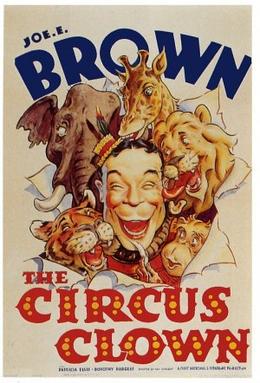
The Circus Clown is a 1934 American Pre-Code comedy film about a man who wants to join the circus against the wishes of his ex-circus clown father. It stars Joe E. Brown and Patricia Ellis.
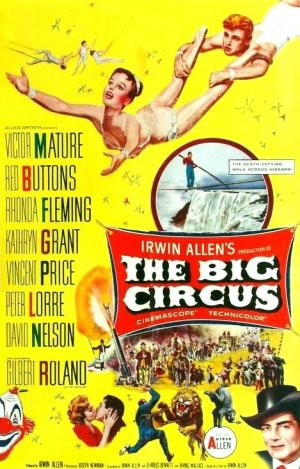
The Big Circus is a 1959 American drama film directed by Joseph M. Newman and starring Victor Mature as a circus owner struggling with financial trouble and a murderous unknown saboteur. It was produced and cowritten by Irwin Allen, later known for a series of big-budget disaster films.
Screaming Eagles is a 1956 American historical war film directed by Charles F. Haasd starring Tom Tryon, Jan Merlin and, in her film debut, French Miss Universe 1954 runner-up Jacqueline Beer. It was released by Allied Artists.
Fort Massacre is a 1958 American western film directed by Joseph M. Newman, starring Joel McCrea, Forrest Tucker, John Russell and Susan Cabot. A possibly mad cavalry commander leads his troops through dangerous Indian territory.
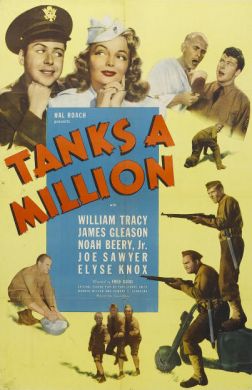
Tanks a Million is a 1941 American comedy film film directed by Fred Guiol. It was the first of Hal Roach's Streamliners, short films under an hour designed for the lower half of a double feature. The two leading characters, whiz-kid sergeant Doubleday and his rival Sergeant Ames, would go on to feature in seven more films, though the series has no overall title.

Eight Iron Men is a 1952 American World War II drama film directed by Edward Dmytryk and produced by Stanley Kramer. It stars Bonar Colleano, Arthur Franz, Lee Marvin, Richard Kiley and Mary Castle. Lee Marvin's powerful performance as the squad's leader ratchets up the suspense along with Dmytryk's noir style direction and J. Roy Hunt's deft cinematography.
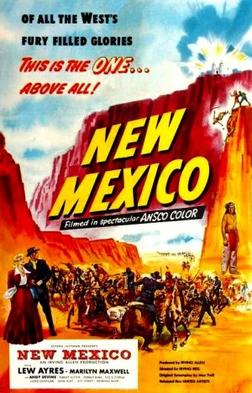
New Mexico is a 1951 American Western film directed by Irving Reis and starring Lew Ayres and Marilyn Maxwell.
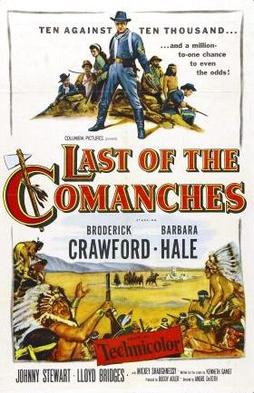
Last of the Comanches is a 1953 American Western film directed by Andre de Toth and starring Broderick Crawford, Barbara Hale, Johnny Stewart and Lloyd Bridges. The film is a remake of the 1943 World War II film Sahara, starring Humphrey Bogart. Lloyd Bridges appeared in both films.

Michael Creighton Balfour was an English actor, working mainly in British films and TV, following his TV debut in the BBC's The Marvellous History of St Bernard, in 1938. He was a recognisable face, often in small character parts and supporting roles, in nearly two hundred films and TV shows, from the 1940s to the 1990s, often playing comical heavies or otherwise shady characters notable for their "loud" clothes, sometimes convincingly cast as an American.


















